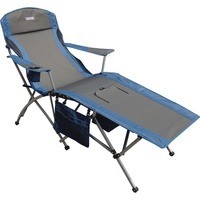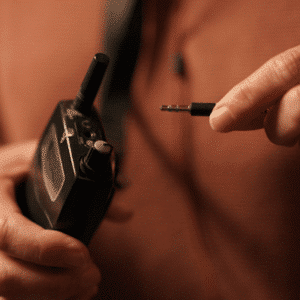
August Night Sky Guide: What to See in the Skies Above Broken Hill
Explore the August night sky over Broken Hill with our stargazing guide. Discover when to see Saturn, the Milky Way, key constellations, and meteor showers.

Welcome to your August night sky guide – created for stargazers in Australia, especially those enjoying the vast dark skies of Broken Hill and Outback NSW. This month delivers a spectacular line-up of celestial sights: the Milky Way arches high overhead, Saturn reaches peak brightness at opposition, and a handful of meteor showers flicker through the early morning skies.
Whether you’re a newcomer to stargazing or a seasoned observer, August offers prime viewing conditions. In this guide, we’ll walk you through the moon phases, key constellations, visible planets, and when and where to look. We’ll focus on early evening skywatching from around 7:30pm to 10:00pm – perfect for naked-eye viewing under Australia’s outback skies or even from a suburban backyard.
Before we get to the stars, it’s helpful to understand this month’s lunar cycle, as moonlight significantly affects visibility, especially for fainter objects like the Milky Way Galaxy’s hazy band or meteor showers.
The darkest skies are ideal for stargazing. Aim for an appropriate night during the month.
August is peak season for viewing the Milky Way in the Southern Hemisphere. Learn more about the galaxy here.
Why is August so special? Because naked eye stargazers don’t need to wait long after sunset to see the view with immediate thrilling and awesome impact. In the early evening, it stretches high overhead – generally from the South to the North. This dense star field with its characteristic hazy milky-coloured band is visible from dark locations, including Outback Astronomy on the outskirts of Broken Hill. Look up and you’ll see it as a milky band of light. What you’re actually seeing is the edge-on view of our own galaxy.
Key regions of interest:
Best viewing: Between 7:30pm and 10:00pm, before the Milky Way starts to set toward the west later in the evening.
The image of the galaxy accompanying this article is quite particular and special. It’s an authoritative illustration of the Milky Way showing the location of the Sun, created by NASA. This face-on schematic highlights the spiral arms, including the Orion Spur (or Orion Arm), with our Sun clearly marked about two‑thirds of the way out from the galaxy’s centre. The diagram reflects current astronomical understanding – that our Milky Way Galaxy is a barred spiral type of galaxy, with the Sun roughly 25,000 to 28,000 light‑years from the Galactic Centre. Our Sun orbits the Galactic Centre at approximately 220–230 km/s, completing one revolution roughly every 230 million years. The Milky Way spans about 100,000 light‑years in diametre, and most stars, including the Sun, are part of the thin disk.
Take a deep dive to learn more about the image and the science behind it here.
August offers a fantastic mix of winter constellations and some early arrivals from the spring sky.
Saturn
Mars
Perseids (peak: 12–13 August)
September brings a few notable events that skywatchers should pencil in:
If you’re in Broken Hill, you’ll enjoy some of the best dark skies the country has to offer. This makes the Milky Way, constellations like Scorpius, and even the fainter stars of Capricornus easily visible.
However, even in urban areas, you can still:
August is a brilliant month for stargazing in Australia, and Broken Hill’s dry, clear skies provide one of the best natural observatories in the country. Whether you’re watching from a backyard in town or attending a Sky Show under the stars at Outback Astronomy, now is the time to look up and reconnect with the cosmos.
You can see Saturn in the east from sunset and Mars low in the west. Saturn is at opposition on 15 August, making it especially bright and visible all night.
Yes, August is peak viewing time for the Milky Way in the Southern Hemisphere. From Broken Hill, it’s visible overhead in the early evening.
The darkest skies are around New Moon (23 August). Aim between 7:30pm and 10:00pm for ideal conditions and avoid the Full Moon (9 August).
Explore our upcoming night sky sessions and reserve your spot beneath the big Broken Hill skies.

Explore the August night sky over Broken Hill with our stargazing guide. Discover when to see Saturn, the Milky Way, key constellations, and meteor showers.

Planet viewing in Broken Hill peaks this summer with Saturn and Jupiter lighting up the night sky. Join Outback Astronomy to discover where Earth fits in the solar system – guided by expert sky hosts under vast, dark skies.

In June 2025, Outback Astronomy hosted a very special guest: astronaut Katherine Bennell-Pegg. Around a warm fire beneath the pristine night sky of Broken Hill, we shared stories about space, science, and the outback spirit. This rare and intimate evening was a powerful reminder of why astro-tourism matters—connecting people not just to the stars, but to inspiring role models who help spark curiosity and ambition. It’s nights like this that make the universe feel just a little closer to home.
PLUS Ticket Inclusions
– Seating – reclined chair
– Sleeping Bag (in cooler months)
– Loan of an audio unit
– Optics suitable for the event*
– Side table
– Food and beverage service
Extras at Time of Booking
– Ear phones (or bring your own)
– Hot chocolate
– Options for other food, drinks
* Varies according to conditions.
** Only used in reclined chairs.
Standard Ticket Inclusions
– Seating
– Loan of an audio unit
– Optics suitable for the event*
Extras at Time of Booking
– Ear phones (or bring your own)
– Hot chocolate
– Reclined chair
– Reclined chair, sleeping bag**
– Options for other food, drinks
* Varies according to conditions.
** Only used in reclined chairs.


We use an audio system in most of our sky shows.
You should remember to bring your 3.5mm round plug/jack earphones – or you can purchase some when making an online booking if they are required for your event.
The following earphone connectors are not suitable – flat-style Apple Lightning, USB, Bluetooth or WiFi.